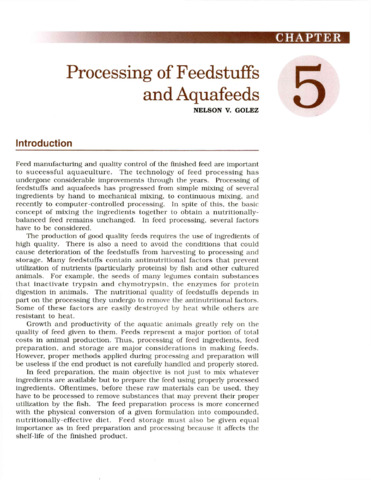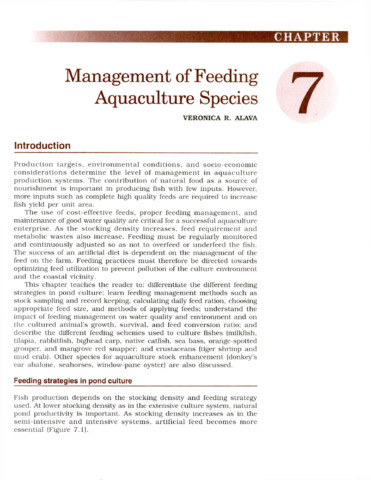Status on development and use of alternative dietary ingredients in aquaculture feed formulations in Thailand
- Global styles
- MLA
- Vancouver
- Elsevier - Harvard
- APA
- Help
Share
Abstract
Thailand is one of the major producers of aquaculture commodities and aquafeeds in Asia. As the aquafeed industry has been growing continuously, the government through the Department of Fisheries (DOF) had undertaken the enactment of the Animal Feed Quality Control Act (1982) since 1992.The DOF oversees production of commercial aquafeeds of eight species. At present, there are many negative impacts by both aquaculture activities and the aquafeed industry. These include the use of feed ingredients from non-sustainable sources. Researches on the use of alternative dietary ingredients in aquafeeds are on-going. However, these solutions need to be cost-effective to be commercially feasible and alternative culture-systems have to be considered to improve feed efficiency. Thus, the important sectors that are involved to ensure the sustainable development and use of alternative dietary ingredients in aquafeeds are the: 1) government, 2) feed millers, and 3) fish farmers.
Suggested Citation
Kosutarak, P. (2015). Status on development and use of alternative dietary ingredients in aquaculture feed formulations in Thailand. In M. R. Catacutan, R. M. Coloso, & B. O. Acosta (Eds.), Development and Use of Alternative Dietary Ingredients or Fish Meal Substitutes in Aquaculture Feed Formulation : Proceedings of the ASEAN Regional Technical Consultation on Development and Use of Alternative Dietary Ingredients or Fish Meal Substitutes in Aquaculture Feed Formulation, 9-11 December 2014, Nay Pyi Taw, Myanmar (pp. 31-39). Tigbauan, Iloilo, Philippines: Aquaculture Department, Southeast Asian Fisheries Development Center.
Type
Conference paperISBN
9789719931058
Related items
Showing items related by title, author, creator and subject.
-
Processing of feedstuffs and aquafeeds
Golez, Nelson V. (Aquaculture Department, Southeast Asian Fisheries Development Center, 2002)This chapter will help the reader understand and appreciate the basic principles of processing, preparation, storage, and quality control in the preparation of aquafeeds. The material in this section is presented in sequence ... -
Management of feeding aquaculture species
Alava, Veronica R. (Aquaculture Department, Southeast Asian Fisheries Development Center, 2002)This chapter teaches the reader to: differentiate the different feeding strategies in pond culture; learn feeding management methods such as stock sampling and record keeping, calculating daily feed ration, choosing ... -
Development and use of alternative ingredients or fish meal substitutes in aquaculture feed formulation: Proceedings of the ASEAN Regional Technical Consultation on Development and Use of Alternative Dietary Ingredients or Fish Meal Substitutes in Aquaculture Feed Formulation
Catacutan, Mae R.; Coloso, Relicardo M.; Acosta, Belen O. (Aquaculture Department, Southeast Asian Fisheries Development Center, 2015)Recognizing the need for a concerted effort to follow-up on this priority issue of the ASEAN on aquaculture feed development and utilization. SEAFDEC (Aquaculture Department and Secretariat) and the Government of Myanmar ...






